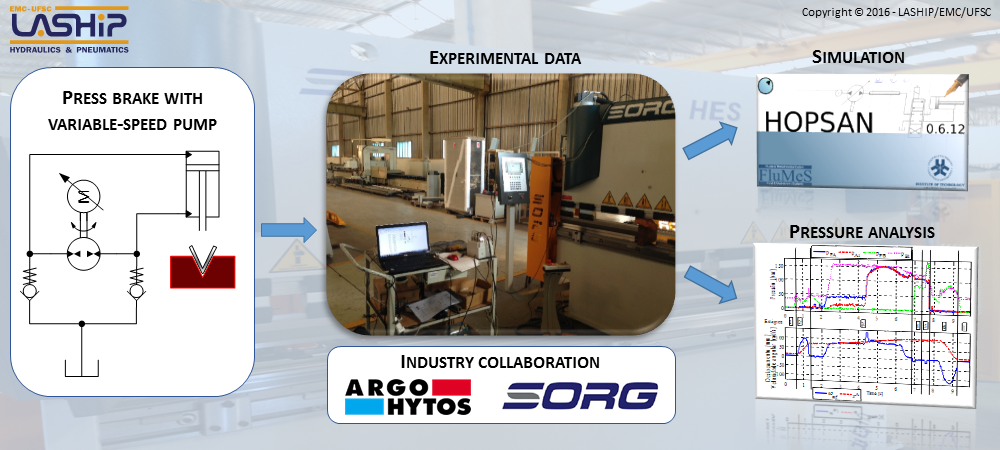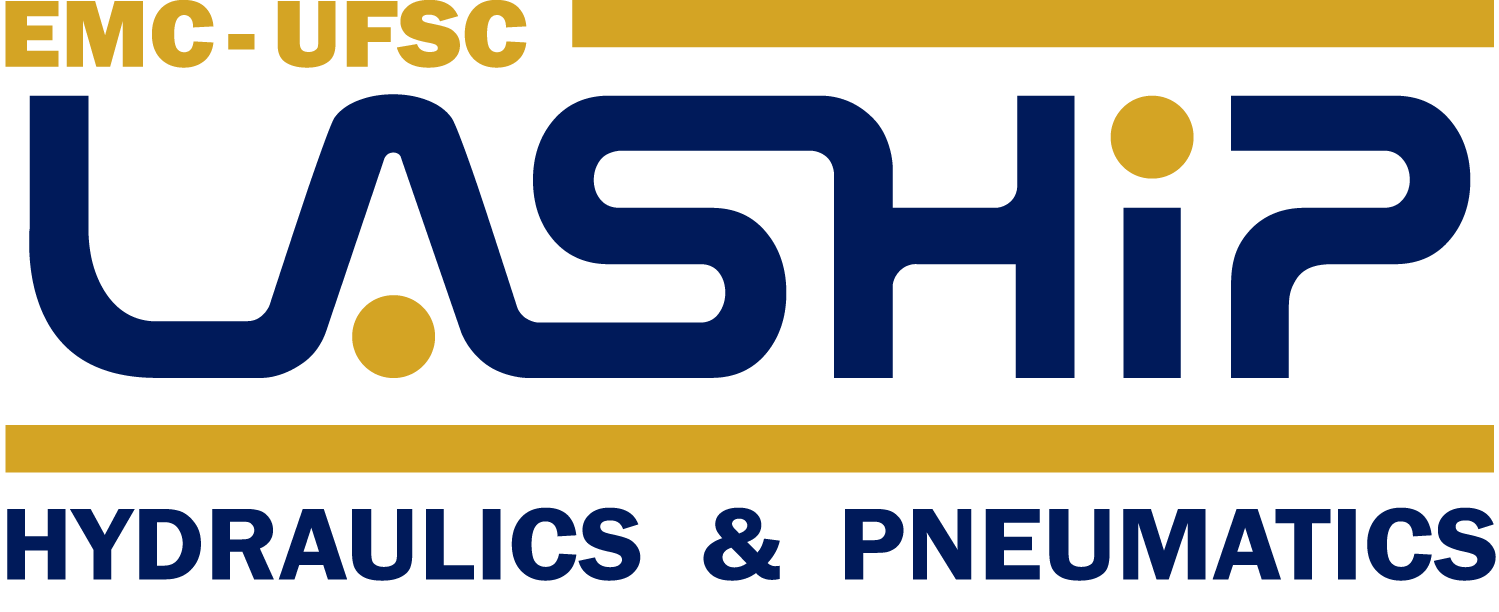Candidate: Paulo Leonel Teixeira 
Program: UFSC / POSMEC
Date: September, 2015
Advisor: Victor Juliano De Negri
Co-advisor: Anders Petter Krus (Flumes / LiU)
Abstract: The continuous increase in worldwide demand for the rational use of energy resources has spurred the pursuit for more efficient systems. Machine manufacturers are therefore gradually replacing the resistive control in hydraulic systems for conservative control. An option of conservative control is the use of pumps driven by electric motors with the capacity to vary its speed, known as variable-speed pumps. In this context, this work features the theoretical and experimental analysis of a new synchronized hydraulic press brake. The hydraulic cylinders of the studied machine are controlled by servomotors that drive the primary hydraulic units. These units perform both pumping and motoring functions along the machine operation cycle and are hence named as pump-motor. The critical operating conditions were identified by analysis based on experimental results. A model of the press brake hydraulic system has been developed and implemented in the numerical simulation software known as Hopsan. Subsequently validation, the model was employed to propose two circuit modifications and to evaluate the increase in the dynamic and static performance. The main benefits of the new circuits are the mitigation of hydraulic shocks and appropriate pressure level for the pump-motor suction line and thus avoiding cavitation. The machine performance is hence enhanced with few changes in the circuit. The study was conducted by combining efforts between the machine manufacturer, Sorg Ind. e Com. de Máquinas, the hydraulic systems supplier, Argo-Hytos AT Fluid Power Systems Ltda., and the university, by means of LASHIP – Laboratory of Hydraulic and Pneumatic Systems – of Federal University of Santa Catarina.
Keywords: Press brake. Variable-speed pump. Pump control.
Reference: TEIXEIRA, P. L. Análise teórico experimental de prensa dobradeira hidráulica controlada por bomba-motor com velocidade variável. 2015. 154 p. Dissertação (Mestrado em Engenharia Mecânica). Universidade Federal de Santa Catarina, Florianópolis.)



